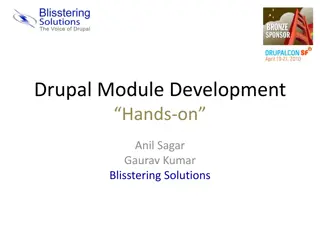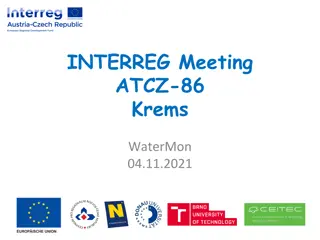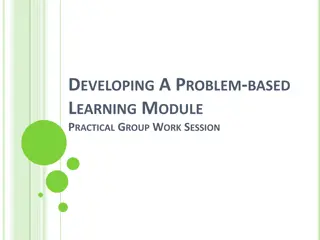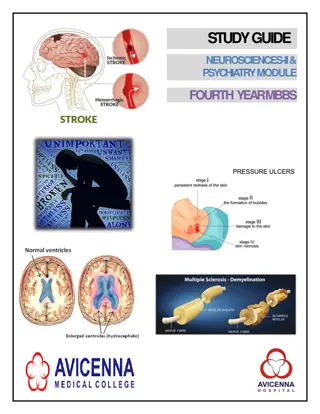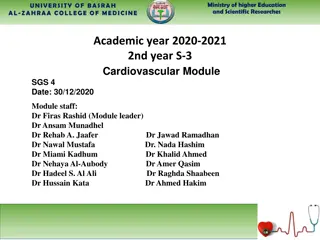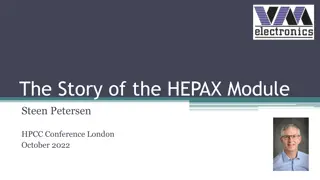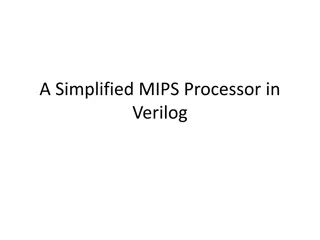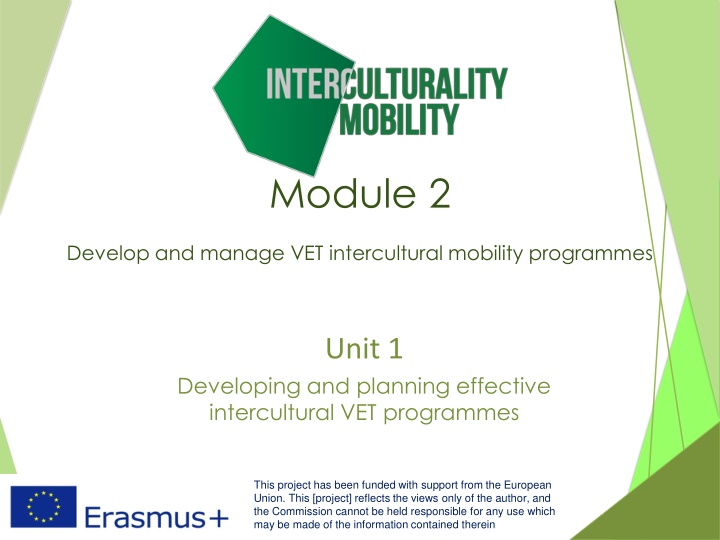
Intercultural VET Programmes - Planning and Development
Explore Module 2 of the VET intercultural mobility programme funded by the European Union, focusing on planning effective intercultural VET programmes, developing partnerships, supporting participants, and self-assessment. Enhance skills in designing and managing international VET partnerships.
Download Presentation

Please find below an Image/Link to download the presentation.
The content on the website is provided AS IS for your information and personal use only. It may not be sold, licensed, or shared on other websites without obtaining consent from the author. If you encounter any issues during the download, it is possible that the publisher has removed the file from their server.
You are allowed to download the files provided on this website for personal or commercial use, subject to the condition that they are used lawfully. All files are the property of their respective owners.
The content on the website is provided AS IS for your information and personal use only. It may not be sold, licensed, or shared on other websites without obtaining consent from the author.
E N D
Presentation Transcript
Module 2 Develop and manage VET intercultural mobility programmes Unit 1 Developing and planning effective intercultural VET programmes This project has been funded with support from the European Union. This [project] reflects the views only of the author, and the Commission cannot be held responsible for any use which may be made of the information contained therein . Co-funded by the Erasmus+ Programme of the European Union
Introduction and overview of Module 2 Module 2 aims to support intercultural VET practitioners and organisations to understand the different types of intercultural VET programmes and experiences, how to plan for them effectively, meet the diverse needs of participants and create and sustain effective international VET partnerships. Co-funded by the Erasmus+ Programme of the European Union
Overview of Module 2 Session focus Unit Developing and planning effective intercultural VET programmes Unit 2.1 Developing effective intercultural VET partnerships Unit 2.2 Understanding and supporting intercultural VET programme participants Unit 2.3 Co-funded by the Erasmus+ Programme of the European Union
Assessment Assessment of this module is largely informal and through Self-assessment Trainer observations of contributions to discussion Contributions to online discussion Co-funded by the Erasmus+ Programme of the European Union
TIME FOR ACTIVITY ACTIVITY NUMBER: 2.1.1 ACTIVITY TITLE: Recalling Module 1 ACTIVITY DURATION: 20 mins COMMENTS: Participants review images to try and recall learning from Module 1. Co-funded by the Erasmus+ Programme of the European Union
MODULE 2 Recap of Module 1 Co-funded by the Erasmus+ Programme of the European Union
MODULE 2 Module title Understanding interculturality in the context of VET Unit title Developing and planning effective intercultural VET programmes To understand the core principles for developing a successful intercultural VET project To develop confidence in using planning tools to identify desired project outcomes and impact for both participants and VET provider organisations To be able to use the necessary tools and skills to design a mobility programme. To support participants to review intercultural VET programme management skills and identify areas for further development Learning objectives Training hours 3 hours (plus on line activities for whole module) Co-funded by the Erasmus+ Programme of the European Union
UNIT CONTENT Types of intercultural VET programmes The logic model framework for planning Developing intercultural aspects for existing provision Project management skills such managing a budget, managing contracts, and writing reports and evaluations Self-evaluation with reference to key standards (linked to key competencies) for intercultural VET providers and practitioners Co-funded by the Erasmus+ Programme of the European Union
TIME FOR ACTIVITY ACTIVITY NUMBER: 2.1.2 ACTIVITY TITLE: Types of intercultural programme ACTIVITY DURATION: 15 mins COMMENTS: Participants discuss of intercultural programmes most useful to their professional contexts and how this dimension can strengthen their work Co-funded by the Erasmus+ Programme of the European Union
Types of intercultural programme You will be provided with a list of types of intercultural programmes. Talk with your partner about learning programmes offered by your organisation or partner organisations. Which intercultural models would be most useful or relevant to your professional context? How would an intercultural aspect add value to your programmes? Make a note of your discussions on the capture sheet. Co-funded by the Erasmus+ Programme of the European Union
TIME FOR ACTIVITY ACTIVITY NUMBER: 2.1.3 ACTIVITY TITLE: Understanding the logic model framework for planning ACTIVITY DURATION: 50 mins COMMENTS: Participants become familiar with a model for planning successful projects. Co-funded by the Erasmus+ Programme of the European Union
The logic model framework for planning The logic model is a tool that can be helpful when developing a project. It can help identify more the purposes of a project, more precisely, including: its components, resources and activities its outcomes and impacts - for the organisation as well as for the project beneficiaries It can also assist in evaluating the accomplishments of the project once it has finished. Co-funded by the Erasmus+ Programme of the European Union
The logic model framework for planning Identified Needs Inputs or Resources Activities Outputs Outcomes What needs have been identified? What resources does the project need? What What specific activities will the project provide? What positive impacts does the project have on its beneficiaries in the short-, medium- and long-term? happens as a result of the project and its activities? What resources can you bring to the project? (human, financial, organisational) Who are the direct and indirect beneficiaries of the project? How will they be provided? In what ways do the activities respond to the identified needs? How do the impacts relate to the identified needs? Where else can you find the necessary resources? What needs can the project address? Co-funded by the Erasmus+ Programme of the European Union
The logic model framework for planning The short video that follows shows how one person tried to understand this model when planning her project. She imagined the logic model framework as a plan for building a bridge between two cities. This helped her identify the key components of needs, inputs, outputs (including activities) and outcomes. Co-funded by the Erasmus+ Programme of the European Union
The logic model framework for planning Co-funded by the Erasmus+ Programme of the European Union
The logic model framework for planning What were the inputs that Jane used? What were the project activities? What was the project output? What outcomes came from the output? What were the impacts? Co-funded by the Erasmus+ Programme of the European Union
Using the logic model Work in a small group. The trainer will give you a planning framework and ask you to spend 20 minutes writing the outline of an intercultural mobility programme for a distinct vocational group: e.g. trainee hairdressers or bricklayers. The trainer will now ask you to circulate and write comments on the plans the other groups have written using post-it notes. You will then read the comments that others have made on your plan and have the opportunity to respond the them. Co-funded by the Erasmus+ Programme of the European Union
Coffee break This Photo by Unknown Author is licensed under CC BY-SA Co-funded by the Erasmus+ Programme of the European Union
TIME FOR ACTIVITY ACTIVITY NUMBER: 2.1.4 ACTIVITY TITLE: Other aspects of project management ACTIVITY DURATION: 15 mins COMMENTS: Participants consider practical requirements for planning an intercultural mobility programme. Co-funded by the Erasmus+ Programme of the European Union
Project management skills What does the logic model framework for planning provide? What do you need in addition to the logic model framework for planning? Co-funded by the Erasmus+ Programme of the European Union
Management skills Think about the resources a VET organisation needs in order to be able to develop an intercultural element for an existing programme. Use the table below to consider how your organisation can address the highlighted areas. Human Resources Administrative support Financial management What is in place? What needs to be developed? Co-funded by the Erasmus+ Programme of the European Union
Other things to consider How will you distribute the tasks involved in managing the project? What other tools will be useful? Are they compatible with software you are already using? For example a Gantt chart to visualise deadlines and priorities Co-funded by the Erasmus+ Programme of the European Union
TIME FOR ACTIVITY ACTIVITY NUMBER: 2.1.5 ACTIVITY TITLE: Developing a mobility element for a learning programme ACTIVITY DURATION: 40 mins COMMENTS: Participants consider practical requirements for planning an intercultural mobility programme. Co-funded by the Erasmus+ Programme of the European Union
Developing mobility activities When seeking to develop intercultural experiences as part of their training programmes, VET providers may choose to offer their learners short mobilities, lasting from two weeks, to up to three months. In this way, the young people can have the opportunity to develop many of the soft skills , such as the ability to adapt to new circumstances, that are often developed through foreign travel. These skills may be helpful to these learners in their future employment. Co-funded by the Erasmus+ Programme of the European Union
Why an intercultural mobility? By exposing young people to new or unfamiliar daily routines, food or drink they have not tried previously and the need to communicate in a different language, they have the opportunity to develop soft skills such as: adaptability resilience self-reliance curiosity about the world or other skills that may be deemed in need of development. Co-funded by the Erasmus+ Programme of the European Union
Why is this important? There are many reasons why young people who study on VET courses are less likely to have travelled abroad, including the fact that they might experience disadvantages such as: they may have left formal education at an early stage and have few or no academic qualifications they may come from homes or neighbourhoods that are affected by poverty they may face other social or economic barriers Co-funded by the Erasmus+ Programme of the European Union
Developing a mobility within a VET structure Erasmus+ is the European Union programme for education, training, youth and sport. Erasmus+ offers funding to support VET and other organisations to provide their learners with training, study, work or volunteering opportunities in other countries. Organisations planning to access this funding will have to meet the conditions available under the Erasmus+ Key Actions. Co-funded by the Erasmus+ Programme of the European Union
How to use Erasmus+ Funding for mobilities for the VET sector is available under Key Action 1. See https://www.erasmusplus.org.uk/vocational- education-and-training-funding VET providers should ensure that they have read and understood the relevant rules and eligibility criteria, and are able to meet all of the funding conditions. See https://www.erasmusplus.org.uk/before-you- apply Co-funded by the Erasmus+ Programme of the European Union
Log onto a computer! 1. Navigate to your nation s Erasmus+ homepage. 2. Find out what types of funding and activities are available to VET organisations for staff as well as for learners. 3. Locate and download any relevant guidance or information documents. 4. Check to see if support webinars are available in your country. 5. Find out the name and contact details of your national agency for Erasmus+. Co-funded by the Erasmus+ Programme of the European Union
Take your time! Familiarise yourself with the Erasmus+ website, including: when and how to apply for funding the level of funding available for your planned programme/activities how to write a good quality bid which countries you can visit Co-funded by the Erasmus+ Programme of the European Union
How to use Erasmus+ VET providers will have to register to apply for Erasmus+ funding. Thereafter, VET providers will be able to use the platform to find a partner. VET providers will also receive support from the National Agency responsible for ensuring Erasmus+ is delivered in their country. This will include further details about how to claim and use funding targeted on mobility activities. Co-funded by the Erasmus+ Programme of the European Union
Budgeting Erasmus+ has set rules regarding the funding of mobility activities that VET providers must comply with. Funding is available under the following headings: Travel Organisational support Individual support (number of days away as well as food and accommodation) Linguistic support Co-funded by the Erasmus+ Programme of the European Union
Budgeting There is also funding available for: exceptional costs learners with special needs (e.g. disabilities) All funding is payable at set, fixed proportions, which relate to overall costs distance to the destination local living costs Co-funded by the Erasmus+ Programme of the European Union
General information Projects can be submitted for approval three times per year: in February, April and October. Organisations can expect to receive a response three months after submission Working backwards, this means that for a mobility taking place in September, for example, VET providers would need to apply in April to receive a response by July. Co-funded by the Erasmus+ Programme of the European Union
General information Some of the grant is paid up front, but up to 25% of the funding is withheld until the end of the activity. For this reason, VET organisations seeking to offer mobilities through Erasmus+ need to be financially secure and not rely solely on the Erasmus+ funding to run the mobility. Co-funded by the Erasmus+ Programme of the European Union
TIME FOR ACTIVITY ACTIVITY NUMBER: 2.1.6 ACTIVITY TITLE: Assessing your readiness ACTIVITY DURATION: 20 mins COMMENTS: Self-evaluation activity Co-funded by the Erasmus+ Programme of the European Union
Which of the skills below is enhanced by cultural competence? Project co-ordination Budget management Case management Participant engagement Progress monitoring Reporting Co-funded by the Erasmus+ Programme of the European Union
How ready is your organisation? To develop an intercultural mobility you will need to work with a partner from another country. The following slides will ask you to test your capacity to do this against two sets of criteria. The first is taken from Key Competences for Lifelong Learning A European Framework , published by European Union; The second is from the Skills CFA that were first considered in Module 1 Co-funded by the Erasmus+ Programme of the European Union
How ready is your organisation? The trainer will give you a blank Key Competences Grid and a blank Skills CFA grid. After you have completed them, the trainer will discuss your responses with you. Co-funded by the Erasmus+ Programme of the European Union
Self evaluation tools 1 1. Communication in the mother tongue 2. Communication in foreign languages 3. Mathematical competence and basic competences in science and technology 4. Digital competence 5. Learning to learn 6. Social and civic competences 7. Sense of initiative and entrepreneurship 8. Cultural awareness and expression Co-funded by the Erasmus+ Programme of the European Union
Self evaluation tools 2 1. Develop your skills to work effectively with people from different countries or diverse cultures 2. Build working relationships with people from different countries or diverse cultures 3. Appoint people from different countries or diverse cultures 4. Manage a multicultural team 5. Manage delivery of a service to people from different countries or diverse cultures 6. Develop new markets with different countries or diverse cultures 7. Work with people from different countries or diverse cultures Co-funded by the Erasmus+ Programme of the European Union
On line activities for Module 2 The trainer will now ask you to log on to the online platform and consider the online learning content for Module 2. The online platform is available at http://vlesupport.co.uk/ealacademy/login/ index.php Co-funded by the Erasmus+ Programme of the European Union
Further Reading and Viewing Websites: https://managementhelp.org/freenonprofittr aining/diagramming-your-nonprofit.htm https://www.projectsmart.co.uk/tools.php Video clips: https://www.youtube.com/watch?v=4kjew1f hQnM https://www.youtube.com/watch?v=qyd3CE- RV60 Co-funded by the Erasmus+ Programme of the European Union
Self assessment and reflection Use the self-evaluation and reflection form to summarise your thoughts on the learning from this session. Co-funded by the Erasmus+ Programme of the European Union
Congratulations! You have completed this unit This project has been funded with support from the European Union. This [project] reflects the views only of the author, and the Commission cannot be held responsible for any use which may be made of the information contained therein . Co-funded by the Erasmus+ Programme of the European Union










